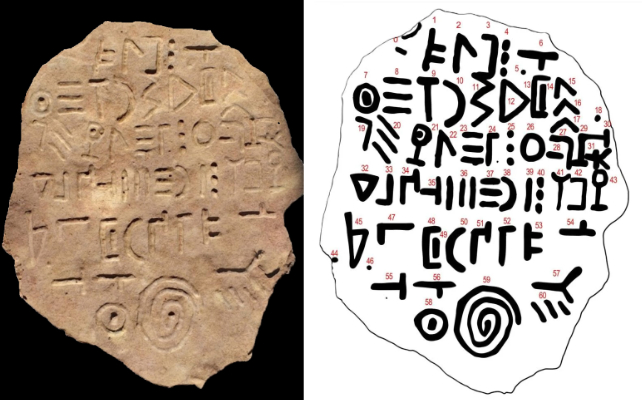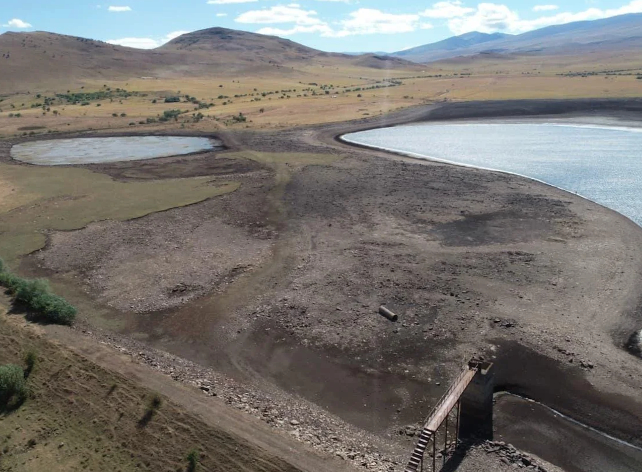A few years ago, late in the fall of 2021, locals fishing Georgia’s Bashplemi Lake in the municipality of Dmanisi came across a long-forgotten piece of history – a small stone tablet inscribed with dozens of mysterious symbols.
Now a team of archaeologists from across Georgia has confirmed the impressions represent samples of a script that has never been documented, raising questions on the spread and preservation of writing across the transcontinental region.
Roughly the size of an iPad, the basalt tablet features just 39 different characters in 60 inscriptions written left to right across seven lines. Each carved symbol began as a series of holes made with a cone-shaped drill, connected into flowing lines with a smooth, round tool.
Who crafted the symbols, or why, is open to speculation. Perhaps they dictate the spoils of a military campaign. Maybe they’re details on construction, or even a receipt for a gift to the gods.
An analysis using optical and electronic microscopy and a cursory examination of the surroundings by air and archeological record suggest the tablet’s origins lay amid the surrounding basalt, possibly during the region’s Bronze Age.

Although new to researchers, the ‘letters’ are similar enough to scripts from the Middle East and undeciphered symbols from pre-Christian Georgia to make forgery by non-scholars a relatively unlikely explanation for the finding.
“We believe that at this stage, there is no reason to doubt the authenticity of the artifact,” the team writes in a published report.
The region’s written records date back to a list of clergy taking part in a council in the early 6th century, coinciding with the spread of Christianity through the region. Prior to that, archeology provides evidence of settlement and metalworking dating back thousands of years, with fossils of early human relatives reaching further through time.
Beyond the Dmanisi region, Georgia’s ancient territories were a melting pot of cultures that left their mark in a variety of scripts. Epigraphs written in Greek, Hebrew, Aramaic, and Middle Persian have been uncovered in the ancient capital of Mtskheta, 20 kilometers (about 12 miles) north of the country’s current capital, Tbilisi.
Fragments of undeciphered, potentially cryptographic images have been found in the nation’s mountainous regions, while various seals found across the land further hint at an evolution of scripts that are yet to be decoded.
Across the classical world, references to other languages to the east can be found. Greek and Roman authors maintained the existence of an ancient script attributed to the ‘Colchis’ people, who inhabited lands east of the Black Sea that were the destiny of the famed Argonauts.
Though no traces of the writings remain, some argue ornate markings on ancient pottery found in Georgia’s west could represent traces of Colchis writing.
With such a diversity of inscriptions, pictographs, and alphabets throughout lands that represent a critical bridge between Europe and Asia, it might not be all that surprising to uncover yet another example of strange writing divorced from known history.

The letters’ shapes might resemble Middle Eastern symbols, while mirroring the seals of Bronze and Early Iron Age Georgia. The researchers note the signs are also reminiscent of Proto-Kartvelian script – a language that would give rise to modern dialects and languages of the region.
As with all undeciphered scripts, significant discoveries acting as some kind of Rosetta Stone are vital for linking the known with the unknown. Future archaeological digs might yet connect the Bashplemi Lake tablet with an ancient attempt to preserve a moment of the past in stone.
“Archaeological excavations carried out at this archaeologically abundant location will provide answers to all other questions,” the team writes.
This research was published in the Journal of Ancient History and Archaeology.





Leave a Comment